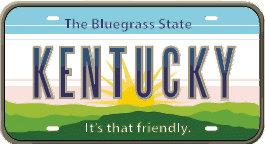Kentucky Gov. Matt Bevin vetoed legislation yesterday that would have given a number of employers in the state employee and local employee retirement systems the option to leave the pension plan at subsidized price. The veto likely avoids causing a spike in employer contribution rates for the remaining members of the Kentucky Retirement Systems (KRS). At the same time, the veto kills another provision in the legislation that would have created some near-term fiscal relief for local employers — which is likely to draw more attention and political anxiety.
- A one-time window in which select eligible employers (mostly health systems and local universities) could opt to leave KRS with interest-free installment payments on their buyout priced using the plan’s discount rate.
- A phase-in of a separately determined contribution rate increase for local employers within the County Employees Retirement System — which is a subdivision of KRS.
The latter provision would likely be a positive for municipalities seeking budgetary stability, though it only accomplishes this by punting some costs down the road. Local employers are facing a large (and needed, from the pension plan’s perspective) contribution rate increase due to the adoption of a more accurate discount rate last summer. HB 362 effectively would have reduced the step up in contribution rates for the first two years, and then ramped up the contribution rate to larger than needed for the third year, before having contribution rates settle back to their projected amounts as actuarially determined.
By contrast, the former provision, allowing for interest-free installment payments is a more complicated and fiscally problematic element of the bill.
Approaches for Opting-Out
Gov. Bevin cited the first provision for his veto, and the reasoning is sound. Allowing employers the option to leave a pension plan is certainly acceptable policy for a legislature in general, but only if it is executed in a way that ensures the sustainability of plan after they leave.
One way to accomplish this is to allow an employer to prospectively leave the DB plan (any future employees would join a retirement plan of the employer’s choice), while stipulating that they continue to make a normal cost payment for their employees who remain in the plan, plus the same unfunded liability amortization payment rate as a percentage of their actual or projected payroll. This is the simplest option, but it does not provide employers with the kind of budgetary certainty they are likely seeking with the buyout option.
Another way to accomplish this would be to calculate the present value of unfunded liabilities for an employer and requiring this amount in a full lump sum (as is currently required under Kentucky law) or partial lump sum with stipulated installment payments. The liability value should also be calculated using a market rate (such as a long-term treasury yield) to ensure that the lump sum and/or installment payments are sufficient to cover future benefit payments that are likely undervalued by the use of a discount rate linked to the DB plan’s assumed return on assets. Under this overall approach the system would have the full value of their accrued benefits and various arrangement could be made for employees already in the system.
Problems with the Opt-Out Specifics
HB362 attempts to get at the latter approach by adding the capacity for installment payments, but does not require interest be made on those installment payments. As a result the present value of the contributions into KRS that would be made from any employer that opts out is significantly less than if the installment payments were priced such that the amount transferred has the same present value, whether paid all today or spread out over time.
While the Bevin veto cites the lack of interest on the installments as a problem, the more critical weakness is the lack of a requirement that a market valued discount rate be sued to price the liabilities. The current KRS discount rates (5.25% for state employee benefits, and 6.25% for county employee benefits) are certainly among the more conservative in the country, but may still be overstating the value of existing unfunded liabilities.
Was the Veto the Right Choice Given the Trade-Offs?
There are clearly some trade-offs with this bill. The fiscal stress reduction provided by the phase-in of contribution rate increases would likely be an overall positive since the language does require that counties catch back up on the phased in payments. But the interest-free buyout clause at a non-market valuation of liabilities would create a significant net negative for the remaining employers in KRS. Collectively, this trade-off is likely to lead individuals towards a favorable or critical view of the veto based on specific preferences that they have within this mix of policy goals. But from the perspective of equity within the KRS pension plans and the fact that the near-term budgetary phase-in was going to come at the cost of future contribution rate increases even larger than currently projected, the veto probably the right decision.
Stay in Touch with Our Pension Experts
Reason Foundation’s Pension Integrity Project has helped policymakers in states like Arizona, Colorado, Michigan, and Montana implement substantive pension reforms. Our monthly newsletter highlights the latest actuarial analysis and policy insights from our team.

